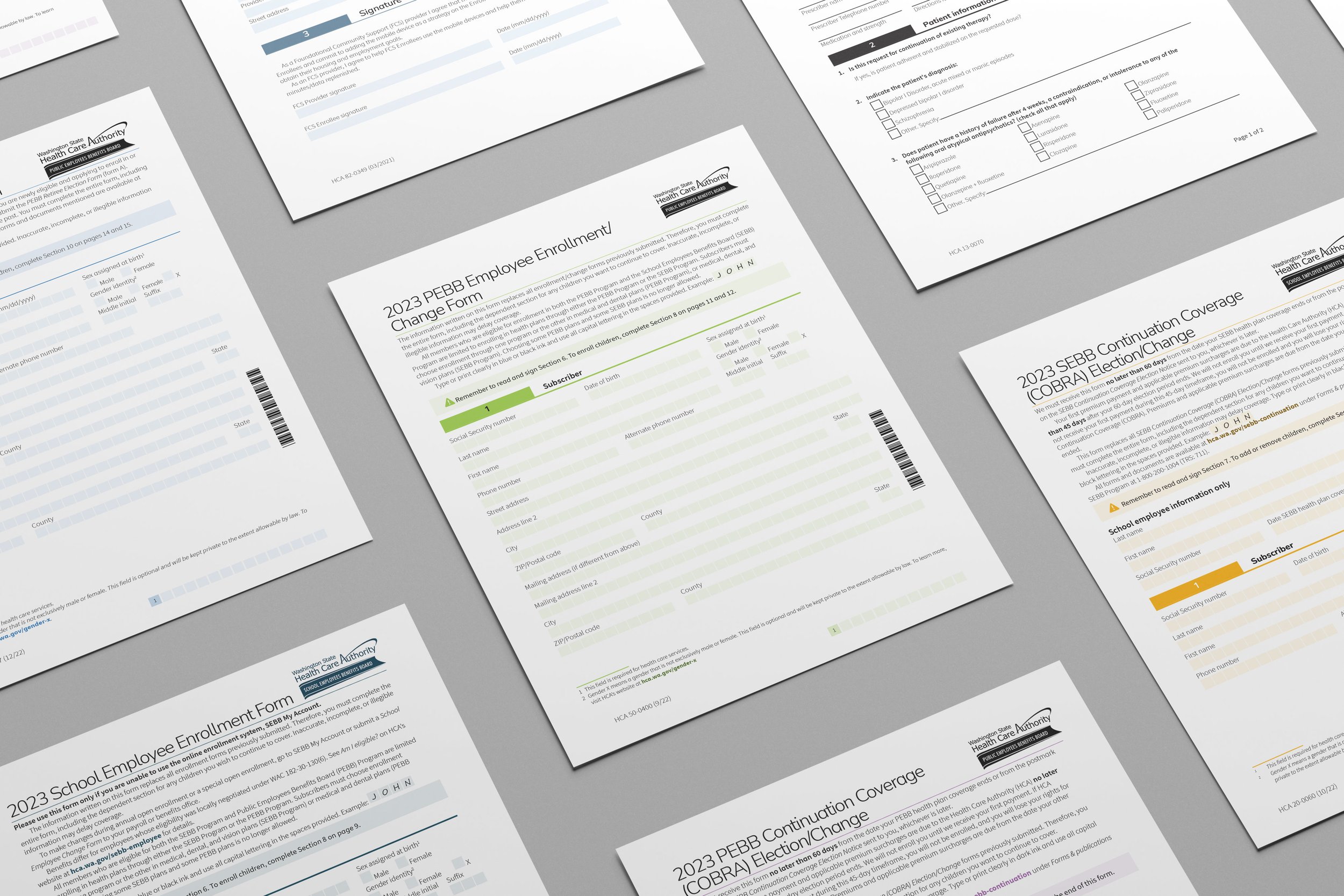Humanizing forms
Everything we do in government involves the intake and processing of information. For us to be effective, that information must be complete and accurate. Hence, forms. A well-designed form can be completed quickly, easily, and with little risk of error. Conversely, poorly-designed forms cause stress, mistakes, and failures.
The Washington State Health Care Authority (HCA) uses hundreds of forms across dozens of programs. While these forms vary widely in scope and impact, from a simple one-page prescription authorization to a sixteen page health insurance enrollment application, they share the need to capture complex data accurately and efficiently.
HCA’s forms were, for lack of a better word, a mess. They were cramped and confusing, and caused frustration for both the people completing them and the public servants processing them. They required manual data entry, which was time consuming, expensive and often lead to errors.
Our team worked with the data processing team and the various programs at HCA to develop forms that were easy to complete and easy to process. We used the best available science to reorganize and clarify the forms, making them easier to understand and complete. And for the first time, we made HCA’s forms fully accessible to people with disabilities, including sensory, cognitive, and motor disabilities.
Additionally, we developed and deployed technological tools to make our forms faster and easier to create than ever before, including custom fonts and scripts to automate key tasks.
Role: Art director, designer, fontographer






